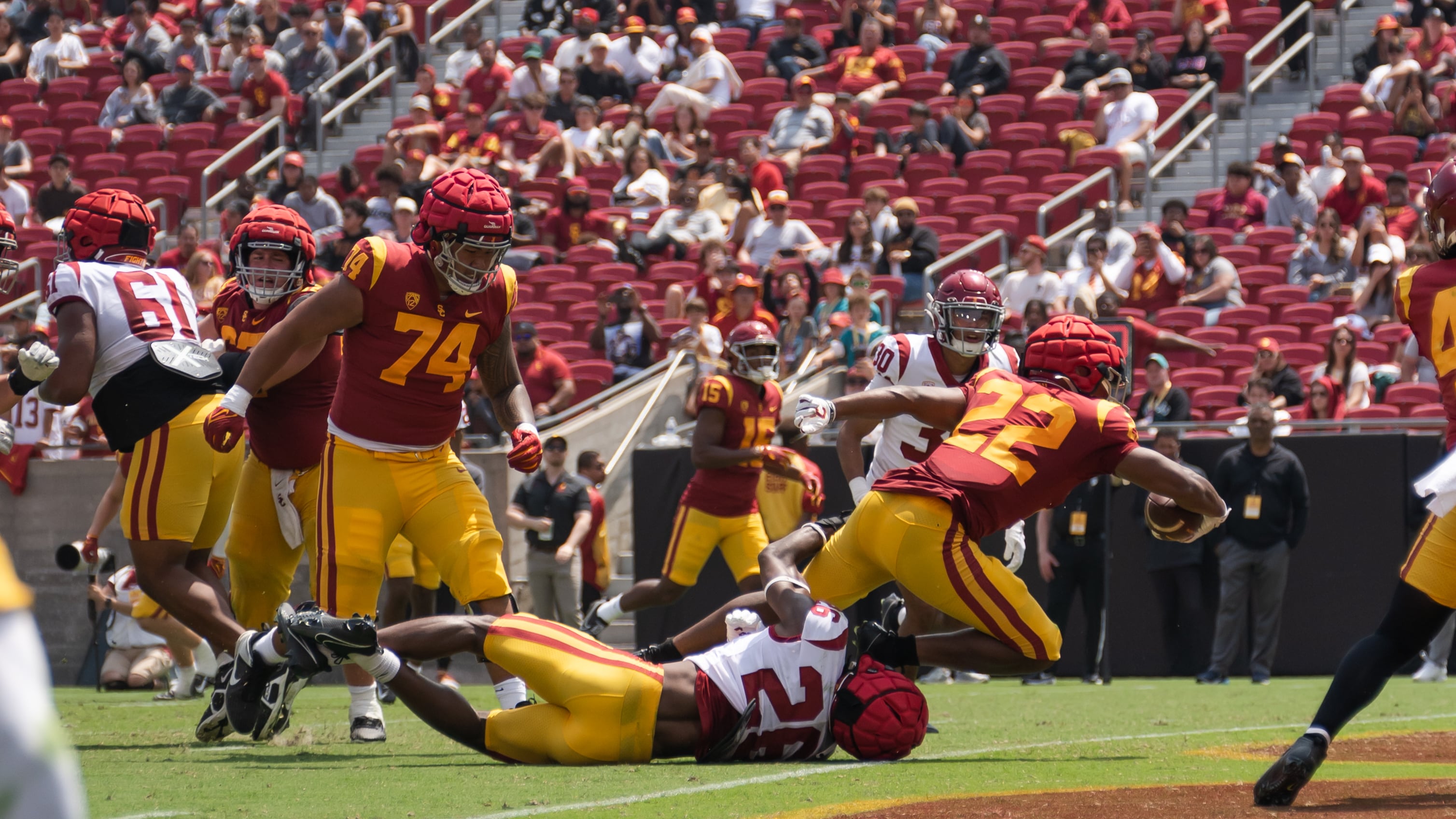USC’s move to the BIG 10 has large implications for the university’s 23 varsity sports, the fans and student athletes alike. The new schedule means a lot more flying to cities a lot farther away than USC teams ever had to deal with before. This coming year, the football team will play at least three games around 2000 miles away. USC has chartered planes for its bigger teams, like football, but there could be a lot more charters now says the travel agent who handles USC Athletics’ flights Kellee Gray.
Kellee Gray: “Because of the big 10 Move, if that’s going to be something that’s probably going to happen more with other teams. I think possibly. We’re about to see.”
Gray has been working on providing USC with a list of options for the fall’s many cross-country flights, including that possibility of charters. Charters are more flexible and student athletes need to work around busy and rigid schedules. But this often means putting in the air and spewing out carbon from a plane that otherwise wouldn’t need to be flying.
Institutions can try compensate for the privileged use of private travel. For example, they can pay for carbon offset fees but Gray says, in her dealings with USC,
Gray: “Nobody has brought it up to me. If they have to somebody else, I don’t know. I know certain airlines like when you just go book a published ticket yourself like online, they can edit that combo allow you to, like check this box pay a certain fee to offset emissions or something like that. What that means I have no idea how they do that. But, but nobody has said anything about it.”
USC football’s debut in the Big 10 is months away. What Gray is working on at the moment are the official recruitment visits for prospective Trojan athletes. She is their first point of contact for travel. She plans everything from getting them to L.A. to touring the city and getting them back home. The athletics department spends a lot on these visits. And they too come with layers of carbon cost.
Gray: “We have official visits coming pretty much for football every weekend, April every weekend in May and every weekend in June and then it starts up again in September. And May 16 and 19 will be a bigger weekend like I’ll generally booked like 20 premium SUVs for the football department and they’ll be taking the kids all over.”
The most energy efficient cars on the road aren’t premium SUV’s.
Gray: “I mean, it’s a certain look, you know, they’re not gonna put them into like a Toyota Corolla sedan, you know. It’s just the way they’ve done it. And I’ve only been here again, like, almost two years and so Annie’s got her whole program and it’s very effective. You know, so she knows what she’s doing.”
Annie is Annie Hanson. Head coach Lincoln Riley brought his colleague here to USC when he signed on. Part of his contract is 24/7 access to a private jet. But USC is famous, or infamous, for its football funding. The Big Ten’s coverage deal with CBS, FOX, and NBC will likely put even more advertiser’s money into the pockets of the athletic department. They’ve already taken great steps to make the university and the Coliseum more sustainable. Here’s hoping that the Trojans in the Big 10 have a big success on the field and in going green.
